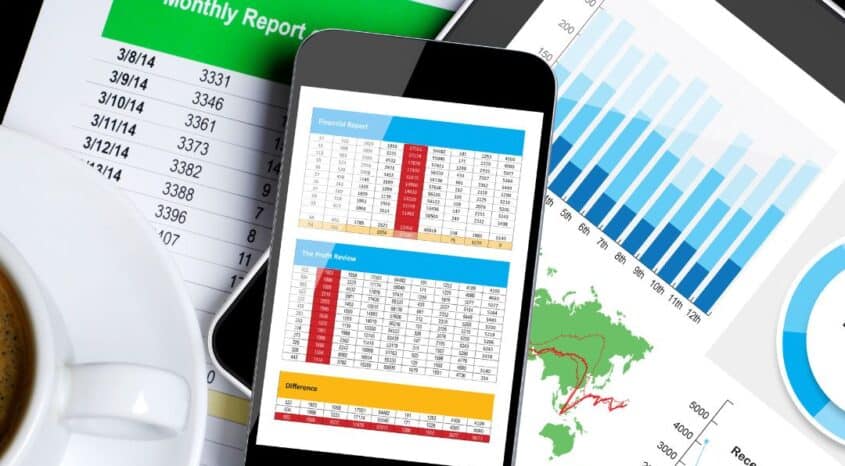What’s the only constant in the world of e-commerce? Change.
To succeed, retailers need to constantly be one step ahead of the next shopping trend – whether it’s a new channel or a new technology.
The trouble is, when a new trend blows up it can be hard to work out if it’s here to stay (like TikTok and influencer campaigns) or a passing fad (like Google’s Circles or, dare we say it, Instagram’s Threads).
To help you get ahead in 2024, let’s look at some key shopping trends and sales channels and work out whether they are short-term trends that aren’t worth your time – or here to revolutionize the e-commerce landscape.
1. Social commerce: Scrolling, liking – and shopping
Social media platforms have evolved into bustling marketplaces, transforming the way we shop. With the integration of shoppable content, platforms like Instagram and TikTok have turned our leisurely scrolls into shopping sprees.
TikTok in particular, which was once a platform for short, quirky videos, has rapidly emerged as a powerhouse for shoppable content with users seamlessly transition from content consumption to making purchases.
Reports in January 2024 revealed that the platform is setting its sights on significantly expanding its US e-commerce business, targeting a tenfold increase to as much as $17.5 billion in gross merchandise value this year.
The ambitious goal puts TikTok on course to give e-commerce giant Amazon.com, as well as fast-growing Chinese players like Temu and Shein, a run for their money. That’s easy to understand when you consider that in the US, TikTok’s user engagement averages two hours daily, significantly outpacing Amazon’s 9.7 minutes.
However, while jumping on the TikTok shopping bandwagon seems like a no brainer, brands should consider that seller fees are set to increase from 2% to 6% this year. The opportunities, though, can easily outweigh the risks for savvy brands with a smart social shopping strategy.
2. Livestream shopping: Beyond the pandemic buzz
Livestream shopping burst onto the scene during the pandemic, offering a virtual shopping experience like never before. But is it here to stay or just a passing trend, a Covid-induced fling?
Whether it’s unboxing sessions, live Q&A with experts, or exclusive product launches, livestream shopping provides a unique connection between brands and consumers that transcends the traditional online shopping experience.
More than 42% of US Gen Z social media users watch livestream videos, per our July 2023 survey.
However, more than half (55%) of US adults have not used and are not interested in livestream shopping, while 7% don’t even know what it is, according to a survey by Bizrate Insights.
“2024 is going to be the year that we see a breakout star emerge in the livestream ecommerce space. It will be a creator or influencer who’s really going to make the format their own and go viral both through their own talent and TikTok boosting the content,” says Insider Intelligence analyst Sky Canaves.
Brands from certain sectors (like beauty, which can be easily demoed) and those targeting younger consumers should consider embracing the interactive and real-time nature of livestream as a sales channel. Other retailers, though, should see how it develops from a distance before jumping in.
3. Voice commerce: Talking the talk, but walking the walk?
Voice-activated shopping promises a futuristic, hands-free shopping experience – and it’s popular with many consumers. According to one study, 51% of consumers are using voice search to research products, while 22% make purchases with a voice command.
Voice commerce works at various stages of the customer journey, from product discovery and checkout to customer service and support. Shoppers can use it to compare prices, learn about different models or add an item to their cart, with voice-activated digital assistants doing the leg work in real time.
For consumers, voice commerce offers a personalized, convenient and streamlined shopping experience (no fumbling for your credit card required). For retailers, it offers an opportunity to boost customer satisfaction and even reduce support costs.
However, while voice commerce technology has advanced, challenges persist – including accuracy issues, security concerns and a general struggle to understand complex commands.
In a nutshell, voice commerce remains a potential game-changer, but widespread adoption faces hurdles that need overcoming. It’s a channel to watch, but not one that should take center stage in your strategy just yet.
4. ChatGPT: Gen Z’s silent shopping assistant
ChatGPT isn’t (yet!) a direct sales platform, but brands and marketers should keep a close eye on how this chat-based model influences consumer behavior – especially when it comes to Gen Z.
From travel destinations to beauty brands, ChatGPT is becoming a go-to for discovery and research with younger shoppers. And when you consider that Gen Z has an annual purchasing power of $143B, all retailers should jump at the opportunity to use AI to get their attention.
There are other benefits of tapping into AI tools, too, such as:
- Slicker customer comms (Gartner predicts that by 2026 one out of every ten customer service agent interactions will be automated through the use of conversational AI tools)
- More targeted marketing (including rapidly-created, personalized, targeted content)
- The ability to spot emerging opportunities for new products faster than competitors
In a world where AI is here to stay and shoppers have a limitless supply of information at their fingertips, brands need to adapt and understand the role ChatGPT can play in shaping preferences, influencing decisions and boosting sales potential.
5. Marketplace diversification: Balancing acts and benefits
From Amazon and Alibaba to Etsy and eBay, online marketplaces are going through a renaissance – re-emerging as the place to be if you’re an e-commerce business.
Research shows a shift of over $2 trillion from traditional retail, dealer, and reseller channels into marketplaces. One-third of all US business now flows through e-commerce, and 63% of that is through marketplaces.
The benefits for retailers are clear – expanded reach, diverse customer bases and increased visibility. However, challenges such as managing inventory across platforms, dealing with different fee structures, and maintaining brand consistency pose real hurdles. Many of the challenges of running a marketplace business – especially the operational ones – can be overcome with the right retail operating system.
Marketplace diversification requires a delicate balance. Brands must weigh the advantages against the complexities, ensuring that their presence across multiple platforms aligns with their overall business strategy. With so much cash on the table, though, it’s definitely something all retailers should consider in 2024.
Next steps: A powerful retail operating system
Whether you opt to expand your social selling, add voice commerce or join new marketplaces, the reality is that success in 2024 relies heavily on a more multichannel approach. The trouble is, adding new sales channels inevitably means adding to the complexity of your business – from inventory to processing orders.
That’s why a flexible, reliable retail operating system like Brightpearl should be top of your wishlist this year. It’s packed with market-leading features, including next-level automation, inventory planning, warehouse management, POS, real-time reporting and more.
Find out how Brightpearl can help you reach your potential in 2024 with a free, bespoke demo.




